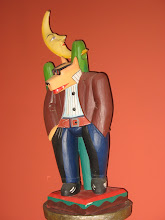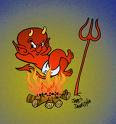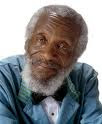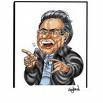“When you have confidence,
You can have lots of fun.
And when you have fun,
You can do amazing things.”
Joe Namath
It’s always interesting watching the opposed worlds on either side of the stage. In theatre, the line between the two is called, “The Fourth Wall”; and, ‘Theatre’ only works because of the tacit agreement between thespian and audience that that wall is, indeed, there. The two worlds exist separately, with the audience ‘observing’ the ‘world’ on stage, and is the foundation of the, ‘suspension of disbelief’. The parameters of Stand-Up comedy are similar, yet vastly more complicated.
Stand-up is a discourse, or, conversation, between two entities; a rather one sided conversation, as, ideally, one side stands up, and hopefully, the other shuts up! I call the audience an entity because, an audience of 200 is no audience at all if it looks and behaves as 200 individuals. For 200 people to merit the term audience, they have to act and react like a single person. You might call this definition disparaging, but, I call it, ‘having their full attention.’ Others call it, “Holding the Crowd”, sometimes a difficult trick to master, but, if you can’t master it ...forget telling jokes!
Naive people assume that a comic gets on stage and is ...somehow ...spontaneously ...funny! And they’re absolutely correct, but ...that apparent ‘spontaneity’ is developed only through months and years of sweat invested in material and delivery. As in theatre, the forth wall is there ...only, in the case of comedy, it is semi-transparent, and, to the untrained eye, permeable. Here too, it all boils down to, ‘suspension of disbelief’, but here, the agreement is not quite so implicit. In Stand-up, each comic must come to his own terms with the audience ...establish his own ‘Symbiosis’.
Symbiosis: “A relationship between two people in which each person is dependent upon and receives reinforcement, whether beneficial or detrimental, from the other.”Sounds almost parasitic ...don’t it? I have seen ‘sets’ that certainly, ‘sucked the life’ out of an audience; conversely, I’ve seen audiences that have, ‘sucked the life’, out of both ‘set’ and comic. In either case, responsibility rests solely on the shoulders of the comic! (Jeez ...I hate to use, ‘responsibility’ and ‘comic’, in the same sentence.) By that I mean, each comic must orchestrate his own ‘suspension’ of each audience’s ‘disbelief’. I’d best describe it by saying:
“OK! ...I know I’m BS’ing!
You know I’m BS’ing!
But, for the moment,
Let’s just ignore that one, awkward fact!”
The relationship between audience and comic is, in its most essential form, a game of confidence. A good conman gives his victim, (audience), the confidence to give the conman what he wants. The victim wants to be conned, just as the audience wants to suspend its disbelief. Were that not the case, they would have saved their money and stayed at home to read a joke book, or watch, ‘Just For Laughs’, on television. But, there is magic, smoke and mirrors in a comedy show that will never leap from the pages of a book, nor from the glass eye of a TV.
A comic has to give the audience the confidence to believe, not come, hat in hand, begging for that belief! And how does he do that? The comic has to believe in his material, in his delivery and in himself to such a great extent, that ...there’s more than enough confidence for everyone. That’s the only way, when the conductor calls, “All aboard”, the passengers will all take their seats, go wherever that particular train is going, all the while sitting back and enjoying the comic ‘scenery’ unwinding before them.
That’s why beginning comics have such difficulties; and why so many don’t make it to their 2nd, 3rd, or 100th time. Without sufficient confidence the train may pull out of the station ...leaving the comic standing on the platform, with not even ...a wave goodbye! Worse, the engine may depart, but the train itself remains motionless at the siding!
Worst of all, the comic may get, ‘red lighted.’ That’s when the train and comic both leave the station together, but, somewhere between departure and destination, the comic’s confidence goes off the rails. At this point the audience abandons him mid journey; the term, ‘red lighted’ comes to us from people being thrown off trains. As they go tumbling through the cinders, rocks and weeds, the last thing they see is the red light on the back of the caboose ...dwindling round the next bend!
That's what it's all about really, having fun! That's what the audience is there for; and, whether they know it or not, that's what the comic is there for. If you're ever in an audience, laughing and enjoying a great set, and you notice a strange 'sucking' sound ...that's just your credibility being flushed! Same audience, same set, but no laughter and the same 'sucking' sound ...same thing ...only this time the credibility is that of the comic! In order for a show to be fun, the comic must bring to the stage ...enough confidence for everybody!










































































No comments:
Post a Comment